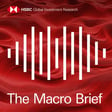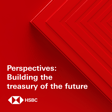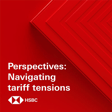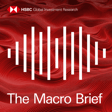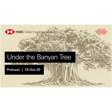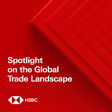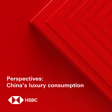Become a Creator today!Start creating today - Share your story with the world!
Start for free
00:00:00
00:00:01

The Macro Viewpoint - EM, China and oil
In this edition we assess the challenging outlook for emerging markets, look at what rising COVID-19 cases mean for China’s economy and find out why there is some welcome relief in the oil markets. Disclaimer: To stay connected and to access free to view reports and videos from HSBC Global Research click here.
Hosted on Acast. See acast.com/privacy for more information.
Transcript
Introduction
00:00:00
Speaker
This is HSBC Global Viewpoint, your window into the thinking, trends and issues shaping global banking and markets.
00:00:09
Speaker
Join us as we hear from industry leaders and HSBC experts on the latest insights and opportunities for your business.
00:00:17
Speaker
Thank you for listening.
Weekly Highlights
00:00:22
Speaker
You're listening to the HSBC Global Research Mac Reviewpoint, our weekly review of the key reports from our economists and strategists across the globe.
00:00:31
Speaker
Coming up this week, we assess how a growing list of challenges are creating a precarious mix for emerging markets.
00:00:39
Speaker
We look at the implications of rising COVID-19 cases and lockdowns in China.
00:00:44
Speaker
And we find out why there is some welcome relief in the oil markets following a period of heightened volatility.
00:00:50
Speaker
This podcast was recorded on Thursday, the 14th of April, 2022.
00:00:55
Speaker
Our full disclosures and disclaimers can be found in the link attached to this podcast.
00:01:01
Speaker
Hello, I'm Aline Van Dyne.
00:01:03
Speaker
And I'm Piers
Emerging Markets Challenges
00:01:04
Speaker
Butler.
00:01:04
Speaker
Emerging markets endured a torrid first quarter as it discounted a raft of negative news flow.
00:01:10
Speaker
Murat Olgen, Global Head of Emerging Markets Research, has been looking at whether we can expect an improvement over the coming months.
00:01:16
Speaker
Murat, welcome to the podcast.
00:01:18
Speaker
Thank you.
00:01:19
Speaker
Why did EM assets perform so poorly in the first quarter?
00:01:22
Speaker
Yes, it was indeed the worst quarter for EM assets in over a decade, if you exclude the start of the pandemic.
00:01:28
Speaker
That's because the investment backdrop is in a state of flux.
00:01:32
Speaker
Emerging markets have been pricing in a very long streak of stagflationary shocks.
00:01:36
Speaker
And there are other issues that are impacting EM negatively, like slowing global growth.
00:01:41
Speaker
Continued impact of the pandemic in terms of supply disruptions, global liquidity is getting less supportive for EM, global rates are higher and commodity prices are all elevated.
00:01:52
Speaker
And obviously the picture is now even more complicated with the war between Russia and Ukraine and all the near and long term uncertainties it causes.
00:02:01
Speaker
Do things look any easier going forward?
00:02:04
Speaker
Well, unfortunately not, because this backdrop likely means more of the same, a continued deterioration of EM's growth and inflation mix.
00:02:13
Speaker
As a matter of fact, our economists have recently revised on the growth trend
00:02:17
Speaker
and revised up their inflation forecast for EYM pretty substantially.
00:02:21
Speaker
Also in the emerging market sentiment survey that we released in March, investors turned clearly more negative, cash levels went up and the risk appetite score took a dive.
00:02:31
Speaker
The Fed rate hikes and the quantitative tightening
00:02:34
Speaker
They still pose the biggest risk to EM in the survey.
00:02:37
Speaker
And also the expectations about global inflation falling to more recent levels are fading.
00:02:42
Speaker
There are significant cost side pressures and continuous supply disruptions.
00:02:46
Speaker
They probably argue for further monetary tightening by EM center banks.
00:02:51
Speaker
And in the meantime, the sought after support for EM from better mainland China growth is yet to materialize.
00:02:58
Speaker
So in summary, there is little support for EM from a top down global macro angle
00:03:03
Speaker
If anything, actually, the drags are getting even more powerful.
00:03:06
Speaker
And are there any divergences among emerging markets themselves?
00:03:09
Speaker
Actually, there are big divergences beneath the surface.
00:03:12
Speaker
The emerging market economies with prudent macro policy mix that are showing the result to arrest inflation pressures or where inflation pressures are already relatively more muted, they're doing quite well, especially if they are tied to the commodity story.
00:03:27
Speaker
They offer investors not only a risk premium buffer, but also terms of trade support.
00:03:31
Speaker
Yes, the commodity prices are rallied a lot and global global and mainland China growth do not bode well with high prices.
00:03:39
Speaker
But there are many other dynamics at play.
00:03:41
Speaker
And also the large trade gains are already in the pipeline for the commodity producers that are helping not only with external balances, but also to some extent with the growth outlook and inflation pressures.
00:03:51
Speaker
Moret, thanks very much.
00:03:53
Speaker
Thank you.
Impact of COVID-19 in China
00:03:56
Speaker
Let's head to China now where COVID-19 cases have continued to rise.
00:04:02
Speaker
And with Shanghai accounting for much of the increase, strict lockdowns across the city have been brought in by the authorities.
00:04:10
Speaker
Let's get the latest from Shan Shan Song, economist for Greater China.
00:04:15
Speaker
She joins us from Hong Kong.
00:04:17
Speaker
Shan Shan, one thing we can safely say about the current wave in China is that the finance capital
00:04:23
Speaker
Shanghai is at the front and centre.
00:04:27
Speaker
Well, yes, that's true.
00:04:28
Speaker
More than 25,000 new cases per day were seen recently, and more than 90% of them are from the city of Shanghai.
00:04:35
Speaker
A great majority of them are asymptomatic, and there is no clear sign of Peking yet.
00:04:40
Speaker
In terms of the rest of the nation, new cases are relatively scattered, and there are also small-scale flare-ups in peripheral provinces, but so far, the condition is under control.
00:04:50
Speaker
Paint us a picture of what life is like for the average Shanghai resident right now.
00:04:55
Speaker
Well, Shanghai has been put into lockdown for more than two weeks.
00:04:59
Speaker
The first 10 days is for massive COVID testing at city level.
00:05:04
Speaker
So now, based on the testing results, the city has grouped all residential units into three risk categories.
00:05:11
Speaker
Great majority of the city is now in the top two level risk groups, i.e.
00:05:16
Speaker
home isolated or in community-based quarantine.
00:05:19
Speaker
And in terms of rest of the nation, the residential units are put into third level risk groups.
00:05:24
Speaker
The personal movement is under strict control, like only one person per household is allowed to go out once a day, the necessities purchase, etc.
00:05:34
Speaker
Also, the city is under close monitoring with frequent COVID testing.
00:05:39
Speaker
There will be adjustments based on the testing results every week or two.
00:05:42
Speaker
Other than Shanghai, where are cases being seen in China and what containment measures are being taken?
00:05:50
Speaker
In a few cities like Jilin and Changchun, where more than 900 cases were still seen every day, lockdown is still in place.
00:05:58
Speaker
But the lockdowns are relatively confined within residential unit level.
00:06:03
Speaker
Outdoor activities and personnel movement is also discouraged.
00:06:08
Speaker
Take Guangzhou, for instance.
00:06:09
Speaker
They have shut down in-person classes at primary and middle schools and shift to online classes.
00:06:16
Speaker
And also they discourage local residents from leaving the city unless absolutely necessary.
00:06:22
Speaker
What sort of economic impact is this having?
00:06:25
Speaker
Well, the impact is definitely on both production and consumption.
00:06:29
Speaker
In terms of production side, major electric vehicle supply chains were forced to suspend production.
00:06:35
Speaker
And also there are highways shutting down in many provinces.
00:06:39
Speaker
Unlike previously, at this time, the disruption is more nationwide from the look of national level production and transportation data.
00:06:48
Speaker
And of course, the impact is on consumption too.
00:06:51
Speaker
We can see that consumer sentiment has been dampened a lot and people are having more of an uncertainty over the outlook of the future.
00:06:59
Speaker
Caixin Services PMI fell to two years lowest point.
00:07:04
Speaker
Real estate transactions also fell to lowest level in recent years.
00:07:08
Speaker
And what can the central government do to offset these economic headwinds?
00:07:12
Speaker
Well, the headwinds are huge, and they are huge difficulty to meeting the 2022 GDP goal, which was set at around 5.5%.
00:07:22
Speaker
But in order to make it achievable, there will be more stimulus during the next few weeks, if not days.
00:07:29
Speaker
So first of all, stepping up fiscal stimulus to engineer a rebound in infrastructure investment will likely do the heavy lifting.
00:07:36
Speaker
As we can see, while the local government special bond issuance has quickened the pace so far,
00:07:43
Speaker
There is also need for broad-based monetary easing in terms of rate cards and triple-R cards.
00:07:49
Speaker
This will act as a strong signaling effect to restore businesses and household confidence.
00:07:57
Speaker
There will also be more targeted relending tools.
00:07:59
Speaker
These will be targeting key areas, say, high-end manufacturing, green investments, and also the weak links of the economy, say, the small and medium-sized enterprises, services sector, etc.,
00:08:11
Speaker
And also in terms of poverty policies, at local level, the restrictions on purchasing have been easing, especially in third-tier cities and less popular second-tier cities so far.
00:08:23
Speaker
And we believe this will continue in the rest of the year.
00:08:26
Speaker
But restrictions in first-tier cities will likely remain relatively strict.
00:08:33
Speaker
Shan Shan, thanks very much.
00:08:35
Speaker
Thank you very much.
Oil Market Dynamics
00:08:39
Speaker
It's been a volatile period for oil markets.
00:08:42
Speaker
Brent prices spiked to around $130 a barrel in March following Russia's invasion of Ukraine, before falling back more recently to around $100 a barrel.
00:08:52
Speaker
Gordon Gray, Global Head of Oil and Gas Equity Research, has been assessing the latest developments.
00:08:57
Speaker
Gordon, welcome to the podcast.
00:08:59
Speaker
Thank you.
00:09:00
Speaker
So, Gordon, firstly, let's have a look at the supply side of the equation.
00:09:05
Speaker
What's happening in terms of Russian oil supply?
00:09:07
Speaker
Well, we've had a whole series of measures taken against Russia.
00:09:12
Speaker
And so far, in terms of the March data, Russian production hasn't actually fallen much at all.
00:09:17
Speaker
At the start of April, there were signs of a more significant half a million barrels a day, at least, decline in production.
00:09:23
Speaker
But I suspect there are some much bigger declines to come.
00:09:26
Speaker
Because what we've seen so far is firstly production holding up because much of that production has been going into storage.
00:09:33
Speaker
But secondly, many of these measures to stop either companies or countries buying Russian crude haven't yet fully taken place.
00:09:41
Speaker
So we can see the Russian outage growing to potentially two, three million barrels per day in the coming few months, offset by some incremental buying, but still a net loss to the market that could be one or two million barrels per day.
00:09:54
Speaker
Now, there was an expectation that US shale oil production would ramp up to sort of compensate, but perhaps because of what's happened in the past, that ramp up has been more disciplined and slow than expected?
00:10:08
Speaker
It is more disciplined, but it's coming.
00:10:10
Speaker
So with these sorts of high prices, even with capital discipline, we think we could probably see growth coming out of the US supply side of a million barrels per day plus this year.
00:10:20
Speaker
And on top of that, OPEC plus is continuing the unwinding of its cuts in a very steady manner.
00:10:27
Speaker
We think that group, again, ex-Russia, could probably increase supply by the best part of a million barrels per day by the middle of the year too.
00:10:35
Speaker
But that presents its own problems in that by mid-year, we think OPEC's spare capacity will have become, by historic standards, extremely low, a little more than 2 million barrels per day.
00:10:46
Speaker
So that's the supply side of the equation.
00:10:50
Speaker
What's the outlook in terms of demand?
00:10:52
Speaker
There's a lot of talk about the prospects of economic growth slowing down.
00:10:56
Speaker
Is that going to have a material effect in terms of oil demand?
00:10:59
Speaker
Well, we're already seeing some signs of it.
00:11:01
Speaker
On the one hand, there's the direct effect in China of the renewed lockdowns.
00:11:06
Speaker
The other important factor is price elasticity of demand is really starting to hit in certain areas.
00:11:12
Speaker
So particularly in the US, gasoline demand has been counter-seasonally, flat to down.
00:11:18
Speaker
Diesel demand has been coming off its recent highs.
00:11:21
Speaker
So some real near-term signs that price levels around where they currently are for products are seriously starting to hamper demand growth.
00:11:30
Speaker
So if we put this all together, what is your outlook in terms of the oil price?
00:11:34
Speaker
Well, putting it all together, I think you add the loss of supply from Russia, new supply from the US, from OPEC, some demand weakness.
00:11:41
Speaker
You still get a market that is extremely tight.
00:11:44
Speaker
And what it needs and what it's now getting, of course, is these releases from strategic government controlled reserves.
00:11:51
Speaker
And those, I think, in practice could amount to an unprecedented level of maybe a million pounds per day for the next six months.
00:11:57
Speaker
But when we look at supply demand balances, those strategic reserves are desperately needed.
00:12:03
Speaker
to prevent the market overheating further and to keep prices under control.
00:12:07
Speaker
So all in all, we see a very firm market for the foreseeable future.
00:12:12
Speaker
Gordon, thank you very much for that update.
00:12:14
Speaker
I'm sure we will have you back on the podcast soon enough.
00:12:17
Speaker
Thank you very much.
Conclusion
00:12:20
Speaker
So that's all from us today.
00:12:22
Speaker
Thank you to our guests Murat Olgan, Chan Shansong and Gordon Gray.
00:12:27
Speaker
Thanks very much for listening.
00:12:29
Speaker
We'll be back again next week.
00:12:35
Speaker
Thank you for listening today.
00:12:37
Speaker
This has been HSBC Global Viewpoint Banking and Markets.
00:12:41
Speaker
For more information about anything you heard in this podcast or to learn about HSBC's global services and offerings, please visit gbm.hsbc.com.
